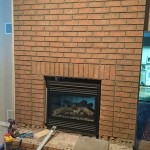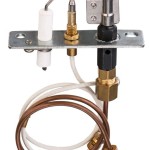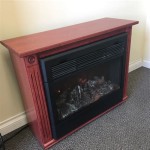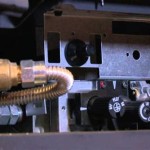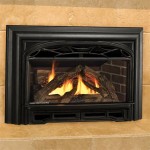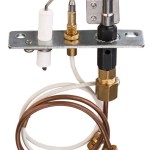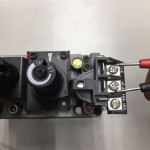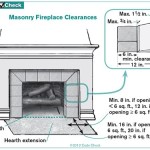Here is an article focusing on Regency Gas Fireplace Remote Controls, aiming for clarity, informativeness, and adherence to the given criteria:
Regency Gas Fireplace Remote Controls: Features, Functionality, and Maintenance
Regency gas fireplaces are a popular choice for homeowners seeking both aesthetic appeal and efficient heating. A key component often included with these fireplaces is the remote control, offering convenient operation and control over the fireplace's functionality. Understanding the features, proper usage, and necessary maintenance of these remotes is crucial for maximizing the fireplace's performance and longevity.
Regency offers a range of remote control models, each designed with specific features and compatibility with different fireplace models. These remotes generally utilize radio frequency (RF) signals to communicate with the fireplace receiver, ensuring reliable operation even when the receiver is not in direct line of sight. This is a significant advantage over infrared (IR) remotes, which require a clear path between the remote and the receiver.
The primary function of a Regency gas fireplace remote is to ignite and extinguish the pilot light and main burner. Beyond this basic functionality, many remotes offer precise control over the flame height, allowing users to adjust the heat output and visual appeal of the fire. Some advanced models incorporate thermostatic control, maintaining a consistent room temperature by automatically adjusting the flame height based on the desired setting. Further features may include timer functions, child safety locks, and battery level indicators.
The user interface of a Regency remote control typically consists of a liquid crystal display (LCD) screen and a series of buttons. The LCD screen displays information such as the current room temperature, set point temperature (if applicable), flame height setting, timer status, and battery level. The buttons allow the user to navigate the menu options, adjust settings, and activate various functions. A clear understanding of the remote's button layout and menu structure is essential for efficient operation.
The remote control system is typically composed of the remote handset, the receiver unit housed within the fireplace, and the wiring connecting the receiver to the fireplace's gas valve and control module. The receiver unit interprets the signals sent by the remote and activates the appropriate functions in the fireplace. Proper installation of the receiver unit, according to the manufacturer's instructions, is vital for the system to function correctly.
Key Point 1: Understanding Remote Control Features and Functionality
Regency gas fireplace remotes are designed to provide a variety of functionalities beyond simple on/off control. Identifying and understanding these features allows users to tailor the fireplace operation to their specific needs and preferences. One crucial aspect is flame height adjustment. Most Regency remotes offer multiple flame height settings, usually ranging from low to high. This allows the user to control the heat output of the fireplace, making it suitable for various ambient temperatures and personal comfort levels.
Thermostatic control is a more advanced feature found on some Regency remote models. This function allows the user to set a desired room temperature, and the remote will automatically adjust the flame height to maintain that temperature. This provides a consistent and comfortable heating experience, eliminating the need for manual adjustments. The thermostatic function relies on a temperature sensor either within the remote itself or connected to the receiver unit. The remote monitors the room temperature and sends signals to the receiver to increase or decrease the flame height accordingly.
Timer functions are another useful feature found on some Regency remotes. These functions allow the user to set a specific time for the fireplace to turn on or off automatically. This can be particularly useful for pre-heating a room before arrival or for automatically turning off the fireplace after a certain period of time, conserving energy and ensuring safety. Timers can be programmed for daily or weekly schedules, providing flexibility and convenience.
Child safety locks are an important feature for households with young children. This function disables the buttons on the remote, preventing accidental activation of the fireplace by children. The child safety lock is typically activated and deactivated by pressing a specific combination of buttons, as outlined in the remote's user manual.
Battery level indicators are a standard feature on virtually all Regency remotes. The LCD screen displays an icon or message indicating the remaining battery life. This allows the user to proactively replace the batteries before they are completely depleted, preventing unexpected interruptions in fireplace operation. Regular battery replacement is essential for reliable remote control functionality.
Key Point 2: Troubleshooting Common Remote Control Issues
Despite their advanced technology, Regency gas fireplace remotes can sometimes experience issues that prevent them from functioning correctly. Troubleshooting these issues can often be done without professional assistance, saving time and money. One of the most common problems is a loss of communication between the remote and the receiver. This can be caused by several factors, including low batteries, interference from other electronic devices, or a problem with the receiver unit.
The first step in troubleshooting communication issues is to replace the batteries in the remote. It is recommended to use fresh, high-quality alkaline batteries. After replacing the batteries, test the remote to see if it is now able to communicate with the receiver. If the problem persists, try moving any potential sources of interference away from the fireplace and remote. Common sources of interference include cordless phones, wireless routers, and other electronic devices that emit radio frequency signals.
If the remote still fails to communicate with the receiver, it may be necessary to re-establish the pairing between the two devices. The pairing process varies depending on the specific remote model, but it typically involves pressing a combination of buttons on the remote and/or the receiver unit. Consult the user manual for detailed instructions on how to pair the remote with the receiver.
Another common issue is a remote that displays an error message or behaves erratically. This can be caused by a software glitch or a hardware malfunction. In some cases, simply resetting the remote can resolve the issue. The reset procedure typically involves removing the batteries for a period of time and then reinserting them. This will clear the remote's memory and restore it to its default settings.
If the remote control buttons are not responding, it may be due to a buildup of dirt or debris inside the remote. Gently cleaning the remote with a soft, dry cloth can often resolve this issue. Avoid using harsh chemicals or abrasive cleaners, as these can damage the remote's surface.
Key Point 3: Maintaining Your Regency Gas Fireplace Remote Control
Proper maintenance is essential for ensuring the longevity and reliable performance of a Regency gas fireplace remote. Regular cleaning, battery replacement, and careful handling are all important aspects of remote control maintenance. As mentioned previously, cleaning the remote regularly with a soft, dry cloth is crucial for preventing the buildup of dirt and debris. This will help to ensure that the buttons function properly and that the LCD screen remains clear and legible.
Battery replacement should be performed proactively, rather than waiting for the batteries to completely deplete. This will prevent unexpected interruptions in fireplace operation and minimize the risk of battery leakage. When replacing the batteries, be sure to use the correct type and size, as specified in the user manual. It is also important to properly dispose of the old batteries in accordance with local regulations.
Protecting the remote from extreme temperatures and humidity is also important for its longevity. Avoid leaving the remote in direct sunlight or near sources of heat, as this can damage the internal components. Similarly, avoid exposing the remote to excessive moisture, as this can cause corrosion and malfunction. Storing the remote in a cool, dry place when not in use will help to prolong its lifespan.
Handle the remote with care to prevent accidental damage. Avoid dropping the remote or subjecting it to excessive pressure, as this can damage the internal components or crack the casing. When transporting the remote, protect it from impact by wrapping it in a soft cloth or storing it in a padded case.
Consulting the user manual regularly for specific maintenance recommendations is essential. The user manual provides detailed instructions on cleaning, battery replacement, troubleshooting, and other important maintenance procedures. Following these recommendations will help to ensure that the remote continues to function reliably for many years.

Regency Gt Gtm Gtmf Handset Remote Control 910 592 Friendly Fires

How To Start A Gas Fireplace Re Light The Pilot Regency
How To Start A Gas Fireplace Re Light The Pilot Regency
Enabling Thermostat Function On Proflame 2 Remotes Regency Fireplace S

How To Start A Gas Fireplace Re Light The Pilot Regency

Regency Firegenie Remote Control Operation

Regency Fireplace Greenfire Gf1500l N Gas Log Fire
Enabling Thermostat Function On Proflame 2 Remotes Regency Fireplace S

Regency Proflame Remote Operation Tutorial

Regency Proflame Remote Gt Surefire 946 690 Kit Impressive Climate
Related Posts

